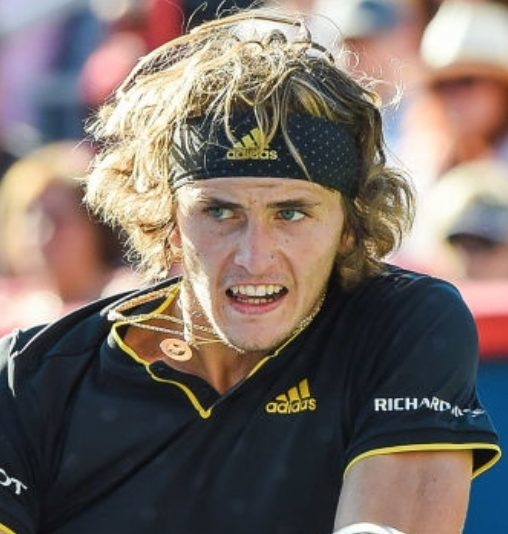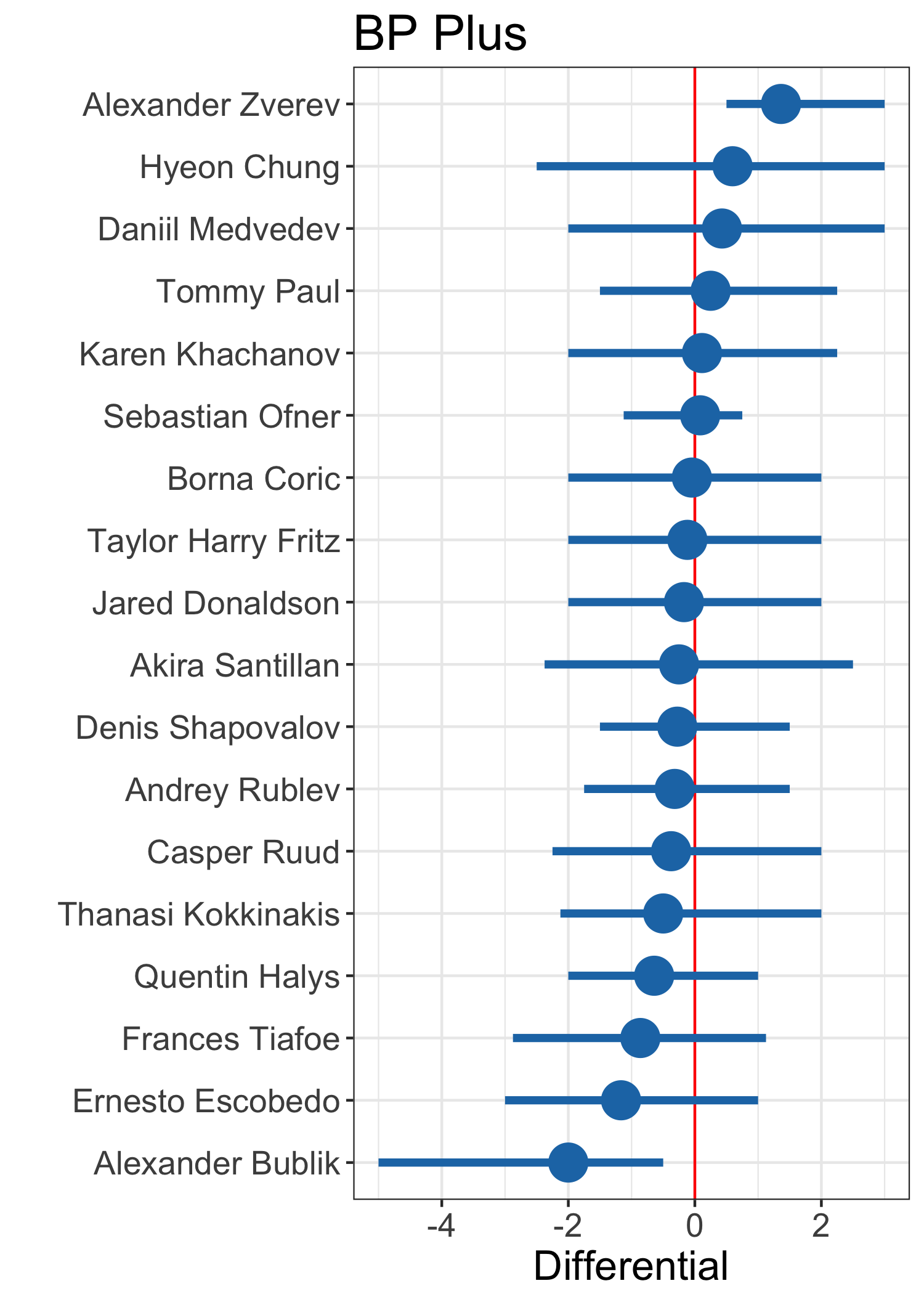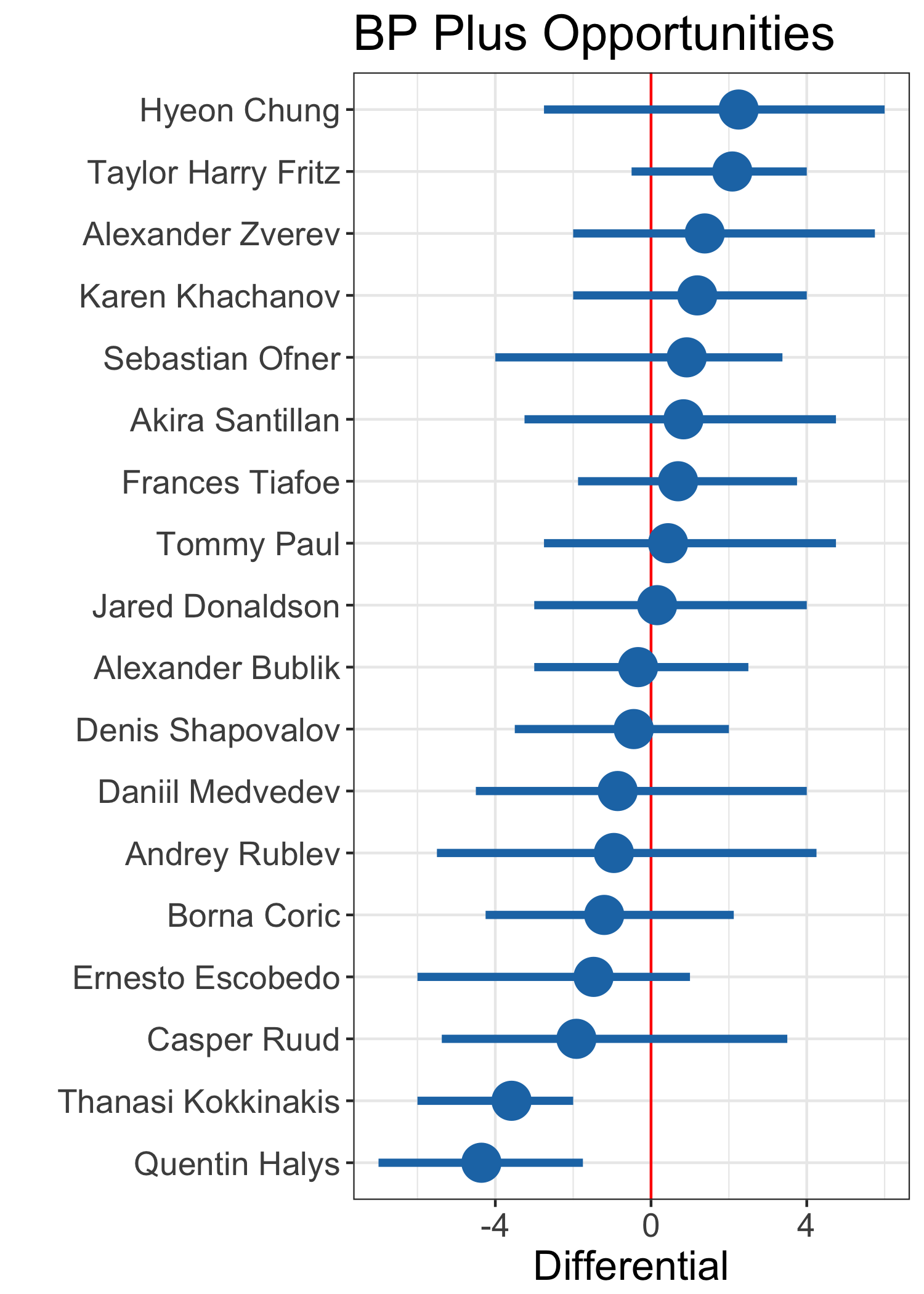Match Dominance Among Next Gen
The US hard court season has been a breakout period for the ATP tour’s Next Gen players. In this post we look at which Next Gen players have been the most dominant this season.
It has been a banner start of the American hard court season for the ATP’s “Next Gen” players, defined by the ATP as players aged 21 or under currently ranked in the Top 200.
In Atlanta, 20 year-old American Tommy Paul reached the quarterfinals where Gilles Muller stopped his run. Just one week later, 21 year-old Daniil Medvedev joined Paul in the quarterfinals at the Citi Open, an event that was ultimately won by another Next Gen phenom 20 year-old Alexander Zverev.

Zverev has had the most impressive 2017 results among the Next Gen. Zverev has won five titles this year, raising his career ATP titles to a total of 6. Two of those titles have been during the summer hard court swing, where he followed up his Citi Open win by defeating Roger Federer in straight sets to take the Coupe Rogers title.
Zverev has earned 4,165 points in the Milan Next Gen race, that is 4.7 times the points won by the No. 2 player in the race, 21 year-old Karen Khachanov. He is also the third player in the 2017 ATP Singles Race, finding himself behind the illustrious pair of Rafael Nadal and Roger Federer.
Although Zverev has been the most in the spotlight of the Next Gen players, many have shown flashes of a bright future in recent days. Denis Shapovalov, the 18 year-old Canadian wunderkind, had one of the most impressive runs of the year at the Coupe Rogers, reaching the semifinal and earning wins over Rafael Nadal and Juan Martin Del Potro on the way. His semifinal match against Zverev made many feel like they were getting an early peak at what could become a rich rivalry.
Another future rivalry was a feature this week in Cincinnati, when 19 year-old Frances Tiafoe defeated Alexander Zverev in the second round. The Next Gen display didn’t end there. Tiafoe and Karen Khachanov reached the R16 and 20 year-old American Jared Donaldson advanced to the quarterfinals.
Taking this all together, it is clear that the sport has seen a promising future shine through on the hard courts of recent weeks.
In this post, I want to take a deeper look at the 2017 match performances of the top 20 players in Milan Next Gen race. In a previous post, I introduced break point plus as a measure of match dominance, which combines breaks and mini-breaks in tiebreaks to capture the overall strength of a player’s wins.
The chart below shows the top performers on their average match break point plus over opponents. (Note that this only includes 250 matches and above and players with fewer than 3 tour matches at this level are excluded.) There were 6 players who have maintained a positive break point plus average: Alexander Zverev, Hyeon Chung, Daniil Medvedev, Tommy Paul, Karen Khachanov, and Sebastian Ofner. Only Zverev has won more than 1 break point plus on average compared to his opponents.

A player can win break points plus by getting opportunities and capitalizing on them. The next chart focuses on creating those opportunities. On this measure, we see more of the Next Gen attaining positive averages over their opponents. There are 9 Next Gen players with a positive average. Hyeon Chung, the 21 year-old from Korea, has the highest opportunity differential, while Fritz comes in second place, both maintaining an average of more than 2 greater break point plus opportunities on average versus their opponents.

Using break point plus stats to measure match dominance highlights a lot to be impressed by among the youngest of the tour. It also puts on spotlight on what has made Zverev the standout Next Gen star. Zverev has one of the highest break point plus creation stats (coming third place) and the highest break point one differential. This tells us that he has been very consistent in creating big moments in a match and turning those moments to his advantage.
The code and data for this post can be found here.

